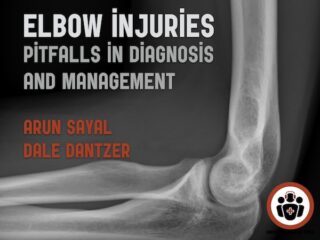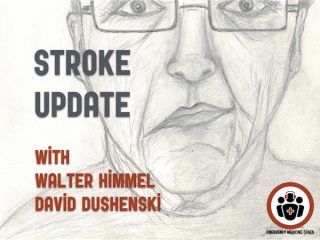Most Recent
Ep 122 Sepsis and Septic Shock – What Matters from EM Cases Course
In this podcast Dr. Sara Gray, intensivist and emergency physician, co-author of The CAEP Sepsis Guidelines, answers questions such as: How does one best recognize occult septic shock? How does SIRS, qSOFA and NEWS compare in predicting poor outcomes in septic patients? Which fluid and how much fluid is best for resuscitation of the septic shock patients? What are the indications for norepinephrine, and when in the resuscitation should it be given, in light of the CENSER trial? What are the goals of resuscitation in the patient with sepsis or septic shock? When should antibiotics administered, given that the latest Surviving Sepsis Campaign Guidelines recommend that antibiotics be administered within one hour of arrival for all patients suspected of sepsis or septic shock? What are the indications for a second vasopressor after norepinephrine? Given the conflicting evidence for steroids in sepsis, what are the indications for steroids? Should we be considering steroids with Vitamin C and thiamine for patients in septic shock? What are the pitfalls of lactate interpretation, and how do serial lactates compare to capillary refill in predicting poor outcomes in light of the ANDROMEDA trial? Is procalcitonin a valuable prognostic indicator in septic patients? and many more...
EM Quick Hits 3 – Kawasaki Disease, Suturing Dog Bites, BVM in RSI, Anticraving Meds for Alcohol Misuse, ED Violence
On this EM Quick Hits podcast we have Natalie May on Kawasaki disease clues to diagnosis, Justin Morgenstern on suturing dog bites: the evidence, Anand Swaminathan on BVM prior to laryngoscopy, Michelle Klaiman on anticraving medications for alcohol use disorder and special guest Howard Ovens on managing ED violence with compassionate care...
Ep 121 Elbow Injuries – Ten Pitfalls in Diagnosis and Management
In this main episode podcast we discuss the pitfalls in the diagnosis and management of elbow injuries and answer questions such as: What is an easy way to remember the surgical indications for radial head fractures? What is the significance of a coronoid process fracture and how does it change management when seen with a radial head fracture? What is the best way to assess for pronation and supination of the forearm? Why is it so important to assess for the extensor mechanism on physical exam for patients with olecranon fractures? What is a quick easy way to test the peripheral nerves of the upper extremities? Which often missed soft tissue injuries of the elbow require urgent operative management? and many more...
EMU 365 Physician Burnout with Peter Brindley
Dr. Brindley explores ways in which physicians can find happiness and meaning in their work. A simple act of showing gratitude is just one of the tools in his toolbox for how to reduce burnout and promote resiliency...
EM Quick Hits 2 Organophosphate Poisoning, TXA for Hemoptysis, Metacarpal Fracture Rotation, Abdominal Stab Wounds, Pediatric IV Cannulation
On this EM Quick Hits podcast we have Emily Austin on organophosphate poisoning, Arun Sayal on malrotation of metacarpal fractures, Andrew Petrosoniak on pitfalls in abdominal stab wound management, Anand Swaminathan on tranexamic acid for non-massive hemoptysis, and Natalie May on pediatric IV cannulation tips and tricks...
Ep 120 ED Stroke Management in the Age of Endovascular Therapy
In this EM Cases main episode podcast, a follow up to our episode on TIA released in November 2018 with Walter Himmel and David Dushenski, we’ll try to simplify the confusing time-based and brain tissue-based options for stroke management. We’ll answer the questions that have been plaguing us for a while now: Which patients are eligible for endovascular therapies? Which patients are the ones who’ll benefit from these therapies and how do we make that happen in our different practice environments? Which patients should be considered for lytic therapy? Which patients should be considered for both lytic and endovascular therapy? and many more...






